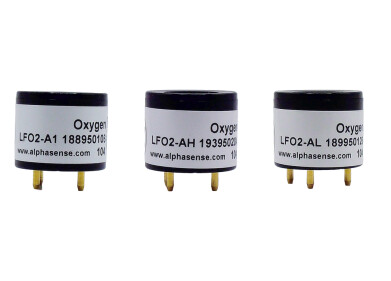Air sensors
Electrochemical sensors enable low-cost air quality monitors to provide near-reference level data
Jun 25 2021
Bruno Beloff, director of South Coast Science recently discussed the controversial topic of whether economically priced air quality monitors can provide data at a level of accuracy that could be compared to reference grade air monitors.
Mr. Beloff, who was participating in a webinar hosted by The Institute of Air Quality Management, discussed how South Coast Science were founded five years ago to create a common digital front-end for electrochemical sensors combined with an open data management framework. Initially they carried out their field work with academia and research institutions, as well as the UN, to develop air monitoring technology suited to real-world scenarios.
Lower cost air quality monitors use electrochemical sensors to measure gas and optical particle counters to measure particulate levels. Alpahsense were chosen to supply the sensor technology. Their gas sensors can measure gas concentrations to within +/- 5 ppb.
David Johnson, from South Coast Science, stated “The Alphasense sensors are ubiquitous in the market. Without reliable sensors, it would be impossible to develop effective algorithms, so it was important for us to partner with Alphasense from the outset.”
The Alphasense sensors show a high level of repeatability in lab conditions, however electrochemical sensor output can be diminished by several environmental conditions, for example: humidity, temperature or other ‘interfering’ gases. South Coast Science used machine learning methods to enhance and accelerate algorithm advancement in projects across the globe. The lessons learned from these various installations enabled South Coast Science to create monitors that could use these finely tuned algorithms in real-time, within the actual monitors, and thus supply accurate data with minimal noise and interference levels.
As there are no official performance standards set for low cost air quality monitors, the onus is on instrumentation manufacturers and developers to carry out tests in a wide range of environments to back up the claims from suppliers’ websites and marketing materials. South Coast Science spent over 3 years carrying out studies in a wide variety of locations using air quality monitoring stations supplied by Ricardo, the global strategic engineering and environmental consultancy. These studies have shown that there is a high level of correlation with data taken from these reference stations, as depicted on the graph.
It is hoped that South Coast Science’s Praxis low cost air quality monitor will become the first of its kind to attain the performance required to achieve MCERTS status for an instrument that has no need for a heated sample inlet to remove moisture from the sample. The open data management that are a feature of the Praxis enables operators to use both raw and amended data to evaluate the algorithms.
South Coast Science’s Praxis/Urban can sense CO, H2S, NO, NO2, O3, SO2, CO2 and VOCs as well as PM1, PM2.5 and PM10 particulates. This air quality monitor is capable of multiple analysis techniques, which includes sampling rate and real-time data access. The Praxis can perform as a consistent device within a wide variety of weather conditions, including continuous operation for up to two hours should an external power loss occur, as well as a 2 year warranty.
One of the presentation slides from the webinar depicted a small Praxis device installed on top of a large reference air quality monitoring station. The slide, Bruno Beloff said, clearly demonstrated the key advantages of low-cost air quality monitors, as it displayed how easy it is to deploy them in almost any location. This allows low-cost monitors to be placed at pollution hot-spots, or at developments or where remediation processes need to be closely observed.
To conclude the webinar, Mr. Beloff stated, “We have managed to create monitors which provide data that correlates very well with reference monitors, but at a fraction of the cost. Nevertheless, we do not believe that low-cost monitors should replace reference monitors; we believe that they should supplement them, by enabling the creation of monitoring networks that measure air quality in the locations that matter the most.”
Digital Edition
IET 35.2 March
April 2025
Air Monitoring - Probe Sampling in Hazardous Areas Under Extreme Conditions - New, Game-Changing Sensor for Methane Emissions - Blue Sky Thinking: a 50-year Retrospective on Technological Prog...
View all digital editions
Events
Apr 22 2025 Hammamet, Tunisia
Apr 22 2025 Kintex, South Korea
Analytica Anacon India & IndiaLabExpo
Apr 23 2025 Mumbai, India
Apr 23 2025 Moscow, Russia
Solar & Energy Storage Summit 2025
Apr 23 2025 Denver, CO, USA








-13.jpg)










_(4427399123)-(2).jpg)




